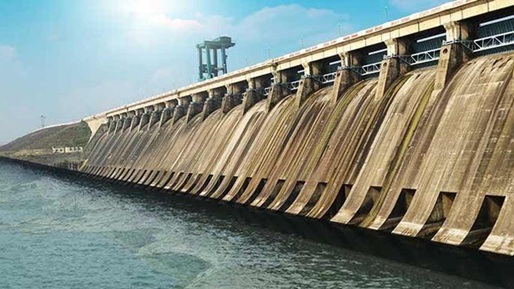(Prelims: Current Affairs)
(Mains, General Studies Paper- 2: Functions and responsibilities of the Union and the States, Issues and challenges related to the federal structure, Devolution of powers and finances to local levels and its challenges) |
Context
Odisha and Chhattisgarh have expressed their willingness to resolve the Mahanadi river water dispute through amicable negotiations. The Union Ministry of Jal Shakti has also supported a solution through mutual consultations.

Recent Developments
- Odisha and Chhattisgarh have informed the Supreme Court that they are willing to resolve the Mahanadi water dispute through mutual consultations.
- A joint committee of the two states may be constituted under the leadership of the Central Water Commission under the guidance of the Union Ministry of Jal Shakti.
- This committee will comprise senior technical officers from both Odisha and Chhattisgarh and its objective will be to facilitate continuous dialogue and technical negotiations to arrive at a mutually beneficial solution.
Mahanadi Water Dispute
- After its formation as a separate state, Chhattisgarh started construction of several major, medium and minor irrigation projects, including anicuts and industrial barrages, without consulting Odisha.
- Odisha alleges that Chhattisgarh has built upstream barrages to reduce water flow into the state.
- Chhattisgarh says it uses its share of water for irrigation and development.
- It is noteworthy that there is no formal inter-state water sharing agreement between the two states.
- Odisha appealed to the Supreme Court in 2016 which resulted in the formation of the Mahanadi Water Disputes Tribunal in 2018 under the Inter-State River Water Disputes Act, 1956.
Importance of amicable settlement
- Less burden on tribunals and judiciary
- Promote cooperative federalism and inter-state harmony
- Ensure timely availability of irrigation and drinking water to both states
Inter-State Water Disputes in India
- In India, the issue of sharing of water of inter-state rivers between states becomes a matter related to the basic water needs, agriculture and livelihood of the affected population.
- This leads to disputes over sharing of river waters between neighbouring states.
- To settle these disputes, the Inter-State River Water Disputes Act, 1956 has been enacted by Parliament under Article 262 of the Constitution.
- Under Article 262, Parliament may by law provide for the adjudication of any dispute or complaint in relation to the use, distribution or control of the water of any inter-state river or river valley.
Steps required to resolve inter-state disputes
- Reform the Inter-State Council: For its implementation, the River Board Act, 1956 mentioned in Entry 56 of the Union List is a powerful law which needs to be amended.
- Under this Act, Basin Organization can be established for the regulation and development of inter-state rivers and their basins.
- Steps to mediation: In the context of South Asia, the World Bank has played a very important role in successfully resolving the dispute related to the rivers of the Indus Basin between India and Pakistan.
- Similarly, there should be a role for mediation between the states.
- Declaring rivers as national property: There has been a long-standing demand to declare rivers as national property. This will curb the tendency of states to consider river water as their right.
- Inclusion of water in the Concurrent List: This is based on the Mihir Shah Report prepared in the year 2014, in which a Central Water Authority has been recommended for water management. This recommendation has also been supported by the Parliamentary Standing Committee.
- Institutional model for inter-state water related issues: There is a need for a permanent mechanism or institutional model at the national level through which water disputes arising between states can be resolved without the help of judiciary.
- Adoption of four R: 4R (Reduce, Reuse, Recycle, Recover) should be used for water management.
- Following the National Water Policy: Under the National Water Policy, there are provisions for proper use of water and conservation of water sources.
- Linking of rivers: This can help in adequate distribution of river water in the basin areas.
Way forward
- Institutional strengthening of river basin organizations.
- Adoption of integrated river basin management.
- Establishing inter-state dialogue mechanism from time to time to prevent disputes.
|
About Mahanadi
- Origin: Sihawa hill, Raipur district, Chhattisgarh
- Length: About 851 km. (out of which 494 km. is situated in Odisha)
- Catchment area: About 1.42 lakh sq. km.
- Main tributaries: Shivnath, Jonk, Hasdeo, Tel, Ong
- Discharge: In the Bay of Bengal near Cuttack, Odisha
- Mahanadi river originates from Chhattisgarh and falls into the Bay of Bengal through Odisha.
|


